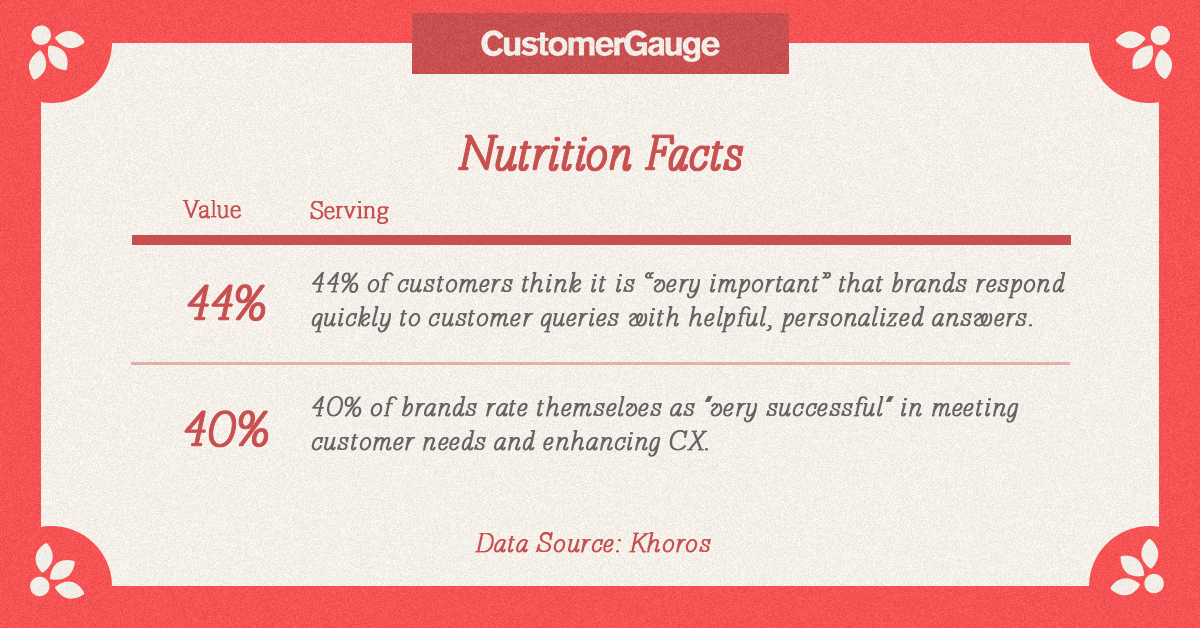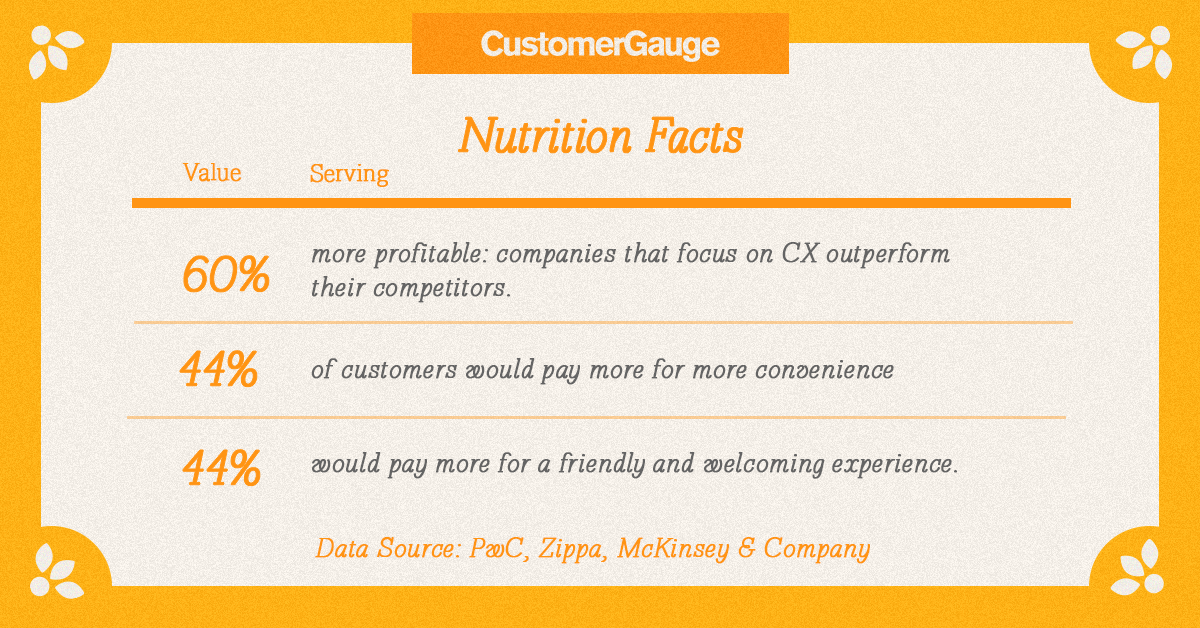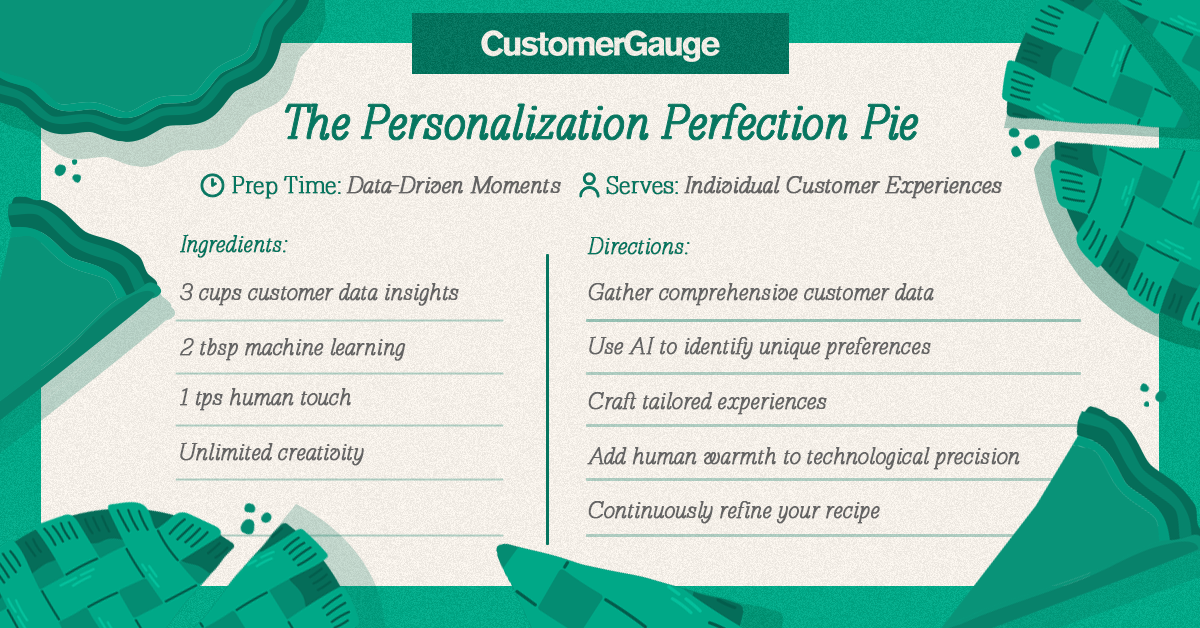2024 has shown that the market is saturated across all industries.
We can’t stress this enough: buyers have more products and services to choose from than ever before.
That’s why customer experience (CX) has become the ultimate differentiator.
With 86% of buyers willing to pay more for a great customer experience, strategic Q1 planning must prioritize CX innovation.
After using our four customer experience recipes for success, you’ll be whipping up impactful 2025 business strategies in no time.
Let’s get started, shall we?
4 Customer Experience Recipes for Success
Fast Follow-Up Fudge: Mastering Responsive Customer Engagement

Prep Time: Ongoing
Serves: Your Entire Customer Base
Ingredients:
- 2 cups active listening skills
- 1 tablespoon empathy
- 3 teaspoons fast personalized response
- A pinch of surprise and warmth
Instructions:
1. Carefully collect customer feedback from all channels
2. Blend listening skills with genuine empathy
3. Personalize each interaction with care
4. Garnish with unexpected moments of delight
5. Serve quickly with a smile
What is the point of collecting customer feedback, if you have no intention to act on it?
Closing the loop on feedback shows your customers that you're listening and have considered how they feel about your business — this goes a long way.
Our research shows that companies that close the loop in less than 48 hours experience a 6-point increase in Net Promoter Score (NPS).
What's more, according to research by Khoros, 44% of customers consider rapid, personalized responses critically important in their brand interactions.

This statistic underscores a fundamental shift in customer expectations: speed and personalization are no longer optional luxuries, but essential components of modern customer experience.
Successful organizations understand that follow-up isn't just about responding quickly but with genuine empathy and precision.
By carefully collecting feedback across multiple channels and blending active listening skills with personalized communication, businesses can create moments of unexpected delight that transform transactional interactions into meaningful connections.
Proactive Problem-Solving Punch: Anticipating Customer Needs

Prep Time: Before Issues Arise
Serves: Customer ConfidenceIngredients:
- 1 cup predictive analytics
- 2 tablespoons anticipatory support
- 4 teaspoons rapid response protocol
- Unlimited patience
Instructions:
1. Identify potential customer friction points
2. Develop preventative support strategies
3. Create clear escalation pathways
4. Communicate transparently and quickly
Collecting feedback over time can help businesses notice trends and get ahead of customer wishes before they even ask. Leveraging artificial intelligence (AI) and prompting it to help with customer experience initiatives has been a fantastic way for companies to get ahead.
From automating customer support to analyzing feedback, there isn't much you can't utilize AI for.
PwC's research reveals companies that focus on customer experience are 60% more profitable than their competitors. This statistic highlights the strategic importance of proactive problem-solving in contemporary business models.

Organizations can identify potential friction points by leveraging predictive analytics and developing anticipatory support strategies before they escalate.
McKinsey & Company's data further reinforces this approach, showing that 43% of customers would pay more for enhanced convenience, while 42% value a friendly and welcoming experience.
This means that proactive support isn't just about preventing issues; it's about creating a comprehensive, customer-centric ecosystem.
Personalization Perfection Pie: Crafting Individual Experiences

Prep Time: Data-Driven Moments
Serves: Individual Customer Experiences
Ingredients:
- 3 cups customer data insights
- 2 tablespoons machine learning
- 1 teaspoon human touch
- Unlimited creativity
Instructions:
1. Gather comprehensive customer data
2. Use AI to identify unique preferences
3. Craft tailored experiences
4. Add human warmth to technological precision
5. Continuously refine your recipe
The Deloitte report provides a seriously compelling narrative about personalization: three out of four consumers are more likely to purchase from businesses delivering personalized experiences, and these brands improve customer loyalty 1.5 times more effectively than those with poor personalization strategies.

McKinsey's research amplifies this insight, demonstrating that personalization can boost revenue by 10-15%.
This isn't about generic customization, but about using sophisticated customer data insights, machine learning, and a delicate human touch to craft individually tailored experiences.
The most successful organizations blend technological precision with genuine human warmth, creating intelligent and empathetic interactions — now that's the true skill.
Continuous Improvement Cookies: Embracing Organizational Learning

Prep Time: Perpetual Learning
Serves: Organizational Growth
Ingredients:
- 2 cups customer feedback
- 1 tablespoon metric analysis
- 3 teaspoons cultural openness
- A dash of humility
Instructions:
1. Collect feedback from every interaction
2. Analyze performance metrics rigorously
3. Embrace a culture of constant learning
4. Implement swift, meaningful changes
5. Celebrate improvements, big and small!
If your goal is to foster change throughout your organization, the best way is through customer experience.
Why? Because CX creates an incredible initiative for a business to rally around and no one will say, "No, I don't want to focus on our customers."
Customer experience connects strategy and culture, a perfect starting point for any employee wanting to ignite change at their company.
Zippa's research illuminates a critical business truth: 73% of consumers consider good customer experience a key purchasing factor. This statistic transforms customer experience from a departmental responsibility to a company-wide strategic imperative.

The most successful organizations view customer feedback as a precious resource, rigorously analyzing performance metrics and maintaining a culture of perpetual learning.
By collecting insights from every interaction, implementing swift meaningful changes, and celebrating all improvements, businesses can create a dynamic, responsive customer experience ecosystem.

